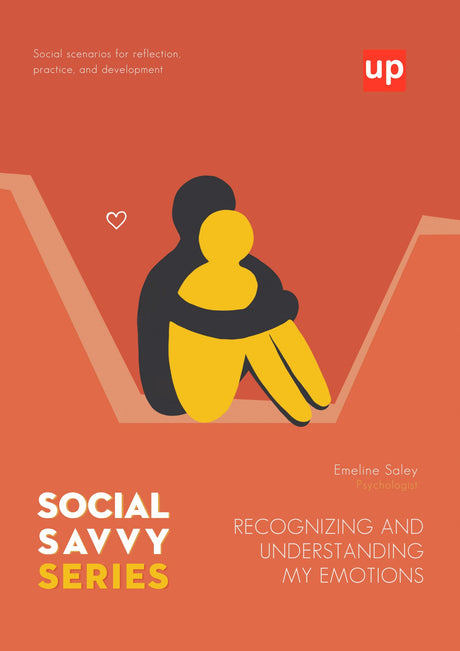Schools are critical environments for the holistic development of young people. However, these institutions can sometimes serve as a breeding ground for sexism, which can have detrimental effects on adolescents. This article examines the various aspects of sexism in schools and its effects on adolescents.
Introduction: Definition of concepts
 Sexism involves discrimination or prejudice based on a person's gender, often promoting the perception that one gender is superior to the other. This discrimination is often rooted in social norms about gender, stereotypes and prejudices. In schools, this can manifest itself in various forms and affect the psyche and development of adolescents.
Sexism involves discrimination or prejudice based on a person's gender, often promoting the perception that one gender is superior to the other. This discrimination is often rooted in social norms about gender, stereotypes and prejudices. In schools, this can manifest itself in various forms and affect the psyche and development of adolescents.
Clarifying the manifestations of sexism in schools
 Gender stereotypes
Gender stereotypes
One of the main ways in which sexism is perpetuated is the creation of gender stereotypes. These stereotypes dictate what is considered appropriate behaviour, interests and roles for boys and girls.
Stereotypes in the classroom and in textbooks
From picture books to textbooks, gender stereotypes are pervasive. For example, male characters are often portrayed as strong, brave and take on leadership roles, while female characters may be portrayed as emotional, caring and often in supportive roles. These stereotypes are also echoed in classroom discussions, where girls are expected to be better at languages and boys at maths or science.
Teachers' expectations and stereotypes
Research suggests that teachers' expectations of students may be influenced by gender stereotypes. For example, a teacher may expect boys to be more assertive and girls to be more compliant. These expectations may affect the feedback teachers give to students and may limit the opportunities they provide.
Dress codes
School dress codes can often be biased and perpetuate sexism, particularly against female students. For example, rules on skirt length or bans on wearing blouses are usually aimed at girls and are rooted in the sexualisation of the female body.
Bias in classroom interactions and participation
Teachers may unconsciously engage in bias during classroom interactions. Studies have shown that boys are often called upon more often, receive more extensive feedback, and are encouraged to participate more in class. On the other hand, girls may be praised for their appearance or for being quiet, which reinforces the stereotype of girls being valued for their appearance and passivity.
Inequality in sports and extracurricular activities
Sport and extracurricular activities are vital to pupils' development. However, schools often provide unequal opportunities and resources to male and female sports teams. Similarly, leadership positions in clubs and activities may be predominantly filled by male pupils.
Harassment and bullying
Sexual harassment and gender-based bullying are unfortunately common in schools. Degrading comments, unwanted advances and physical abuse create a hostile environment. This behaviour is not only harmful to the victims, but also reinforces the perception that such behaviour is acceptable.
Understanding the consequences for adolescents
 Psychological effects
Psychological effects
The perpetuation of sexism in schools can lead to various psychological problems among adolescents. This includes reduced self-esteem, anxiety, depression, and even self-harming tendencies. Especially for girls, constant exposure to sexist norms can lead to body image issues and eating disorders.
Impact on academic performance
When students experience sexism, it can negatively affect their concentration, motivation and ultimately their academic performance. This is particularly true for girls in STEM subjects, where a sense of not belonging or the devaluation of their abilities can cause them to underperform to their potential.
Influences on career choices and aspirations
Adolescents' career aspirations can be significantly affected by the sexism they experience or perceive. Girls may avoid certain career paths because they are perceived as 'male' or because they lack female role models in these areas. Boys, too , may avoid careers traditionally associated with femininity, such as nursing or early childhood education, because of social pressure and stigma.
Impact on relationship dynamics
Exposure to sexism during adolescence plays an important role in how individuals approach relationships as they grow older. Adolescents who witness or experience sexism are more likely to accept unequal power dynamics and may have difficulty forming healthy relationships based on mutual respect and equality.
Self-expression and identity development
During adolescence, individuals are at a critical phase of identity formation and self-expression. Sexism can stifle this development by imposing rigid gender norms. Consequently, young people may repress aspects of their personality or interests to conform to social expectations.
Perpetuation of gender inequality in adult life
Sexism in schools contributes to the normalisation of gender inequality. As adolescents transition into adulthood, these ingrained biases and stereotypes can perpetuate systemic sexism in the workplace, community and family.
Strategies to combat sexism in schools

Comprehensive curriculum reform
The curriculum plays an important role in shaping attitudes and values. Schools need to critically examine and reform their curricula to ensure that they are gender-sensitive. This includes ensuring that textbooks and materials are free of gender stereotypes and that the contributions of women and other genders are adequately represented.
Training and awareness-raising of teachers
Teachers play a key role in the lives of students. It is therefore important that teachers are regularly trained to recognise and mitigate their own biases. They should be equipped with the skills to promote an inclusive environment and to proactively address cases of sexism.
Encouraging students' critical thinking
Educating students about gender equality and sexism is crucial. Schools should foster an environment where pupils are encouraged to critically evaluate and challenge social norms and stereotypes. This can be achieved through discussions, projects and extra-curricular activities focusing on gender issues.
Involvement of parents and the community
Parents and the wider community play an important role in the attitudes children develop towards gender. Schools should actively engage with parents and community members to raise awareness about the harmful effects of sexism and the importance of gender equality.
Establish and enforce anti-discrimination policies
Schools should have clear policies against sexism, harassment and discrimination. These policies should be communicated to pupils, staff and parents. A system of reporting incidents without fear of retaliation is also vital.
Promoting diversity in extra-curricular activities
Schools should actively promote diversity in sport and extra-curricular activities. This includes providing equal opportunities and resources for boys and girls and encouraging participation of all genders.
Role models and mentoring programmes
Exposure to role models with different backgrounds and different career paths can have a transformative impact on pupils. Schools should facilitate mentoring programmes and invite speakers who challenge traditional gender norms.
Case studies and real life examples
One of the most powerful ways to demonstrate the pervasiveness and impact of sexism in schools is through real-life examples and case studies.
Example 1: Dress code violation
Consider the case of a high school student, Emily, who was sent home for wearing a t-shirt on a particularly hot day. The school's justification was that her attire could be a "distraction" for male students. The incident not only embarrassed Emily, but also conveyed the message that a girl's education can be compromised to accommodate boys' behavior.
Example 2: Bias in classroom interaction
Another example involves Michael, who has always loved reading and wanted to join the literature club. However, his teacher suggested that he join the robotics club instead because "boys are naturally good at building and fixing things". This gender bias limited Michael's opportunity to pursue his passion.
Global perspective on sexism in schools
Sexism in schools is a global issue, but its manifestations can vary between cultures and regions.
Developing countries
In some developing countries, gender stereotypes are deeply entrenched. For example, in parts of South Asia and Africa, education for girls is sometimes considered unnecessary. Girls may be expected to learn household chores instead of going to school.
Developed countries
In contrast, in many developed countries, girls are encouraged to pursue education. However, more subtle forms of sexism persist in the form of gender bias in STEM fields and disproportionate dress codes.
International efforts
There are international organisations and programmes such as UNICEF and the Malala Fund working to combat gender discrimination in education worldwide.
The role of technology in perpetuating or combating sexism
Perpetuation of sexism
Social media platforms can sometimes provide fertile ground for sexism among adolescents. Cyberbullying, gender-based trolls and the spread of stereotypes can thrive unchecked.
Combating sexism
Conversely, technology can be a powerful tool to combat sexism. Online campaigns, educational videos and forums can raise awareness and create supportive communities. It allows teens to connect with like-minded people, access information and initiate change.
Suggested activities and projects for schools
Mentoring programmes
Schools can initiate peer mentoring programs where older students mentor younger students, encouraging mixed-gender pairs to promote mutual understanding and respect.
Gender sensitivity workshops
Conducting gender sensitivity workshops for both students and staff can help to identify and address subconscious biases and stereotypes.
Collaborative projects
Encouraging boys and girls to work together on school projects can promote teamwork and mutual respect, breaking down prejudices.
Community outreach programmes
Involve students in community outreach programs that focus on gender equality. This helps to cultivate socially responsible citizens.
Conclusion
Sexism in schools is not just a problem for the individuals affected; it is a social issue that warrants collective action. Schools, as microcosms of society, have the potential to either perpetuate or challenge social norms. Through comprehensive reforms in curriculum, teacher training, student education and policy, schools can play a key role in shaping a generation that not only rejects sexist ideologies but actively works to build inclusive communities. Investing in these reforms is not just an investment in education; it is an investment in the future of society.
Original content from the Upbility writing team. Reproduction of this article, in whole or in part, without attribution to the publisher is prohibited.
You can also read:
- The neurobiology of childhood depression: New discoveries
- The link between childhood obesity and depression
- 4 tips for anger management
- Introduction to Cognitive Behavioural Therapy (CBT)
- The Link Between ADHD and Exercise
- Improve Your Child's Self-Esteem With Extracurricular Activities
- ADHD and Lying: The Reasons Why Kids With ADHD Are Prone to Lying
- Back to School: Making it Easier for Students With Learning Disabilities
Suggested Books on ADHD:









